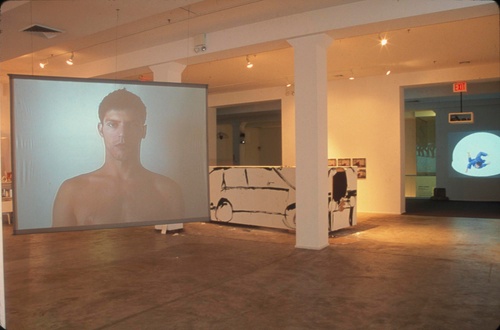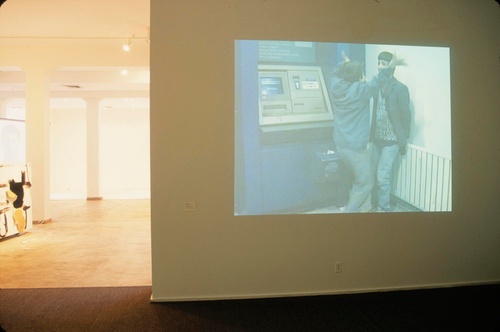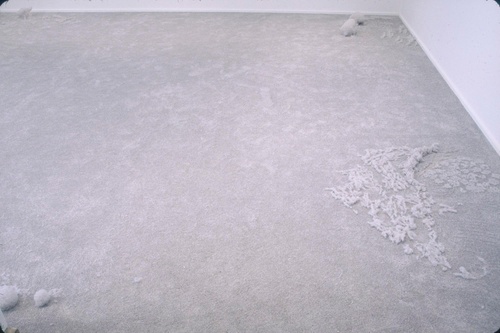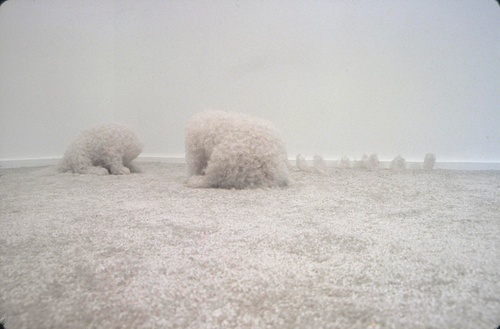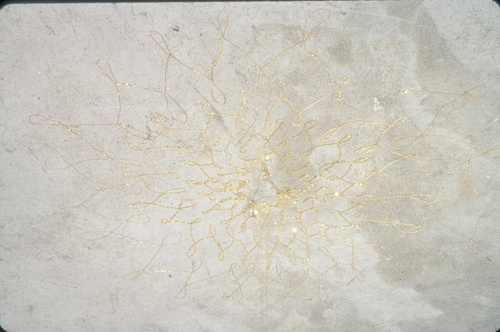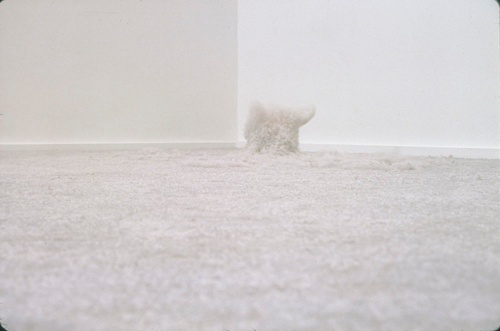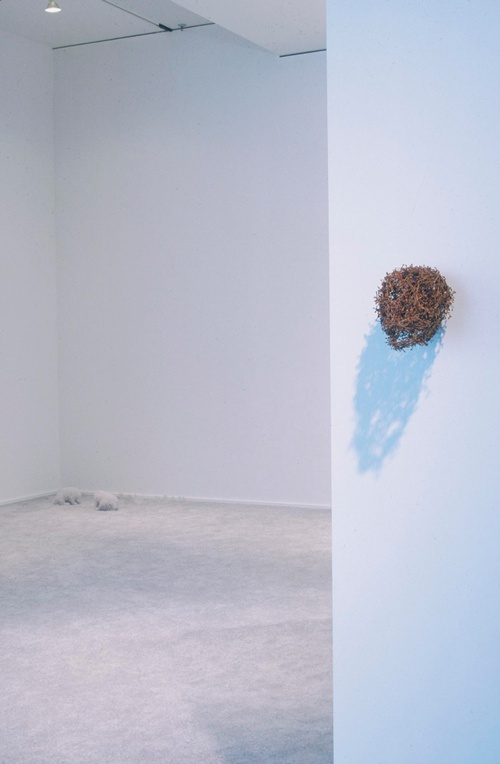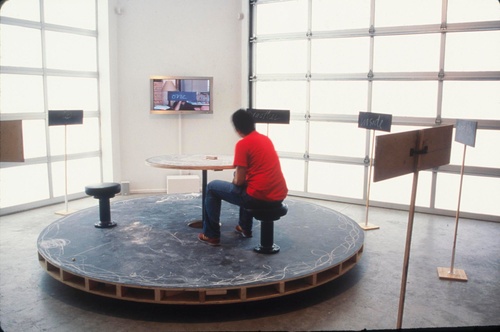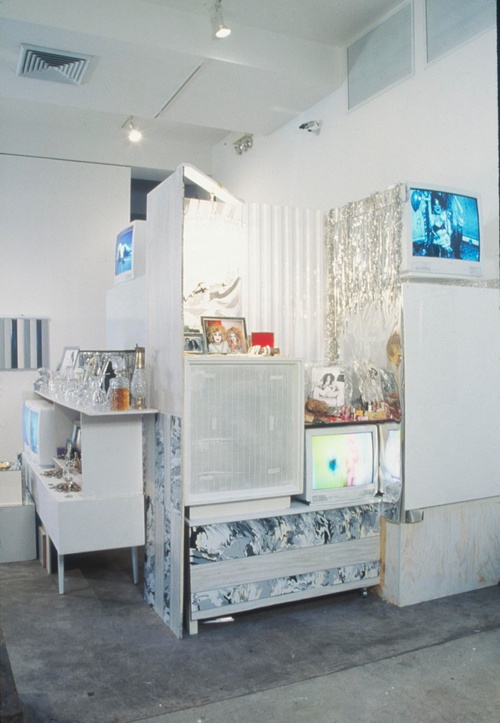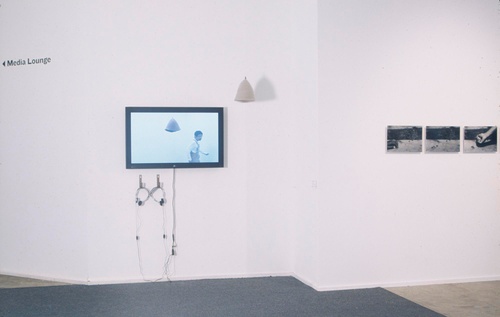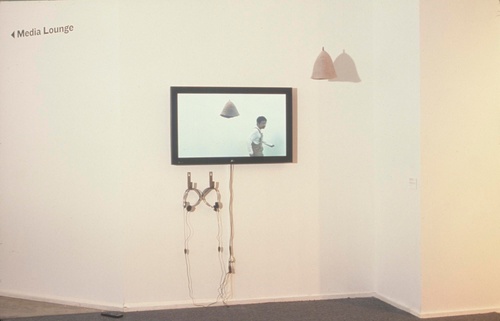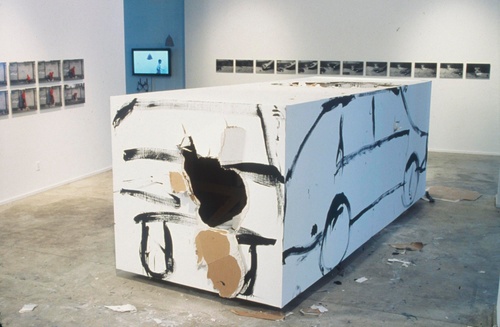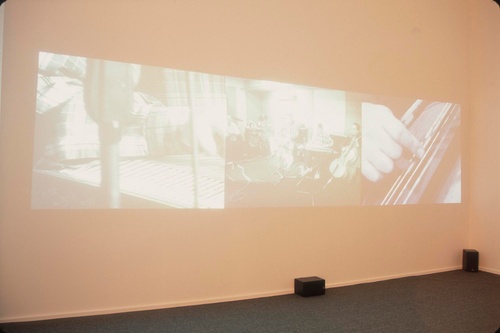Adaptive Behavior
Adaptive Behavior
The New Museum is on the move and in transition. Launching our temporary exhibition space at the Chelsea Art Museum, Adaptive Behavior presents the work of eleven artists hailing from five continents-Africa, Asia, Europe, North American, and South America-who blur the lines between public performance and personal behavior. These artists assimilate cultural change and adapt to the kinds of unstable conditions that cause public and private realms to be constantly renegotiated. Many of the works on view involve the exchange of confidences or deal with intimate moments and simple gestures. Drawing on quotidian experiences and common situations, the artists in Adaptive Behavior are reconfiguring and redefining performance, documentation, interactivity, and improvisation.
For some, the body is the medium, and physical performance becomes a mirror reflecting and distorting cultural and historical shifts. Tusyoshi Ozawa borrows from the comic routine of a popular Japanese TV character, improvising performances that reflect on topics such as the daily news. Robin Rhode’s graffiti performances explore both the history of his native South Africa and his personal experiences. Kwabena P. Slaughter strikes poses recognizable to us as stemming from popular media sources such as action movies and sports.
Many artists in Adaptive Behavior manipulate the roles of observer and observed and in so doing complicate the distinctions between performance and documentation. Fikret Atay for example, captures joyful performative moments of ordinary people living under unstable political circumstances. The protagonists of Yoshua Okon’s videos, Mexican policemen, dance and twirl their batons for the artist’s camera. Bojan Sarcevic asks a Turkish gypsy band to perform Western pop songs using traditional Ottoman instrumentation and without the benefit of a musical score. Suchan Kinoshita invites us onto a stage for the presentation of personal monologues and provides us a space in which to reconsider routines and rules of behavior.
In today’s world, the taking of photos or moving images has become a second-nature activity. The skill to record everyday behaviors in a casual manner is now widespread. Reality TV offers another poignant example of how this type of activity conflates our understanding of public performance and private behavior. Fiorenza Menini videotapes individuals subjected to states of being that are radically different from their everyday lives. She takes a porn actor and go-go dancer and films him trying to fight off the effects of sleeping pills. Kerry Tribe transforms a conversation between a ten-year-old girl and her father into a meditation on memory, history, and desire. Robert Melee uses casual home-movie techniques to document his relationship with his mother and to explore his interest in narcissistic behavior. In both sculpture and drawing, Tonico Lemos Auad performs a kind of magical transformation of commonplace materials into haunting fragments and fragile forms, to suggest ephemerality and the passing of time.
The exponential growth and advancement of technological networks have accelerated and selectively channeled the movement of information, capital, and people across the globe. The artists in Adaptive Behavior pay close attention to the specific qualities of place and individual behaviors as they are inscribed within this global experience. And while these artists make use of such networks, their overriding concern is to restore the intimate power of imagery, and of human exchange, even as this is threatened by the ubiquity of those very networks. It is the artists’ capacity for adaptation that turns such threats into potentialities.
